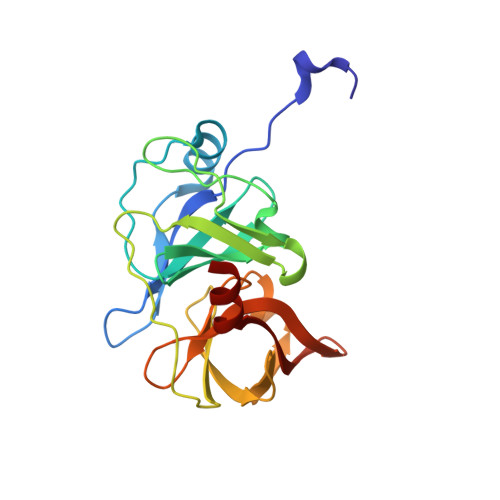Quinoxaline-Based Linear HCV NS3/4A Protease Inhibitors Exhibit Potent Activity against Drug Resistant Variants.
Rusere, L.N., Matthew, A.N., Lockbaum, G.J., Jahangir, M., Newton, A., Petropoulos, C.J., Huang, W., Kurt Yilmaz, N., Schiffer, C.A., Ali, A.(2018) ACS Med Chem Lett 9: 691-696
- PubMed: 30034602
- DOI: https://doi.org/10.1021/acsmedchemlett.8b00150
- Primary Citation of Related Structures:
6CVW, 6CVX, 6CVY - PubMed Abstract:
A series of linear HCV NS3/4A protease inhibitors was designed by eliminating the P2-P4 macrocyclic linker in grazoprevir, which, in addition to conferring conformational flexibility, allowed structure-activity relationship (SAR) exploration of diverse quinoxalines at the P2 position. Biochemical and replicon data indicated preference for small hydrophobic groups at the 3-position of P2 quinoxaline for maintaining potency against resistant variants R155K, A156T, and D168A/V. The linear inhibitors, though generally less potent than the corresponding macrocyclic analogues, were relatively easier to synthesize and less susceptible to drug resistance. Three inhibitor cocrystal structures bound to wild-type NS3/4A protease revealed a conformation with subtle changes in the binding of P2 quinoxaline, depending on the 3-position substituent, likely impacting both inhibitor potency and resistance profile. The SAR and structural analysis highlight inhibitor features that strengthen interactions of the P2 moiety with the catalytic triad residues, providing valuable insights to improve potency against resistant variants.
- Department of Biochemistry and Molecular Pharmacology, University of Massachusetts Medical School, Worcester, Massachusetts 01605, United States.
Organizational Affiliation:




















